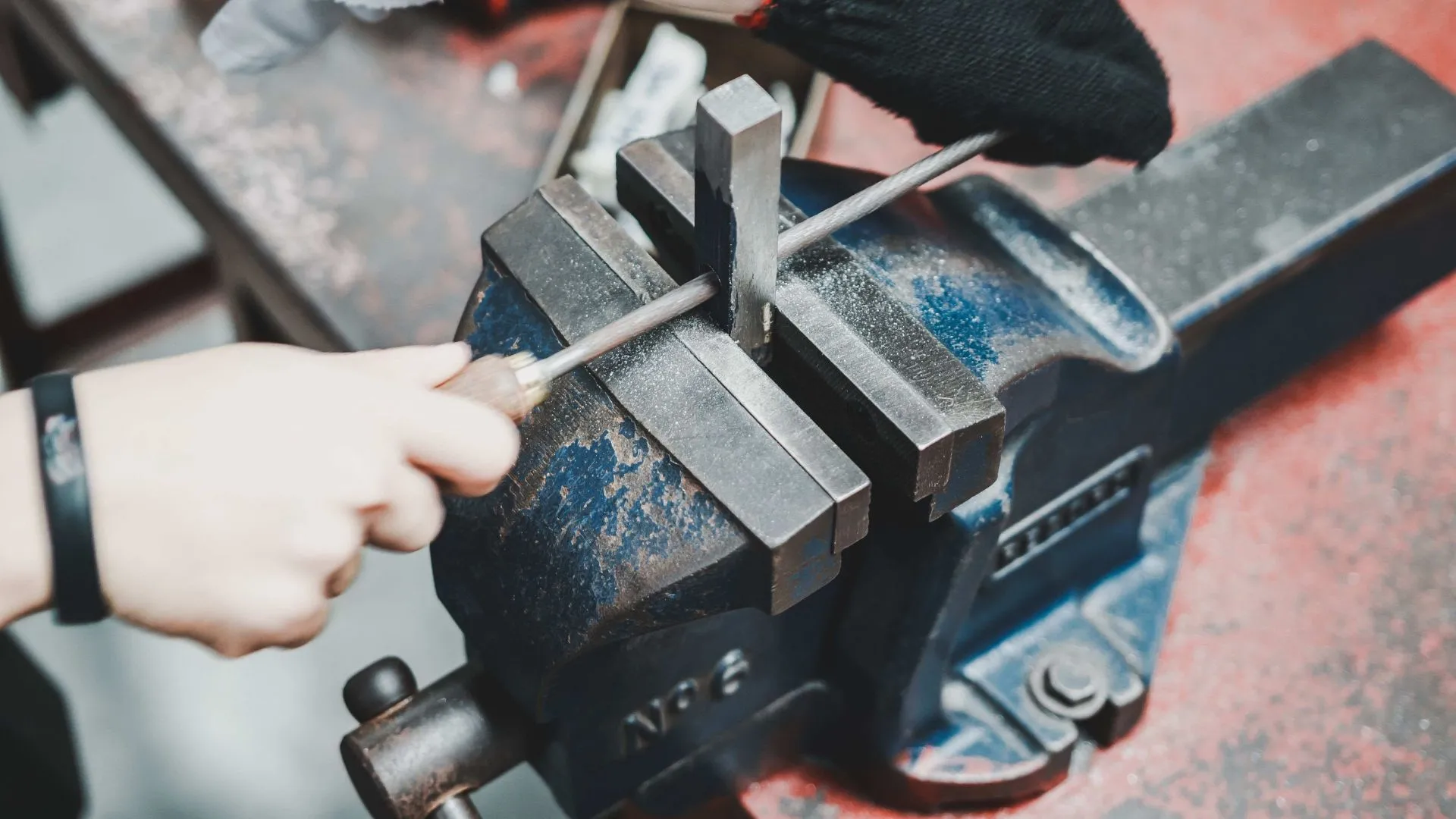The Ultimate Guide to Bench Vice

A bench vice is an essential tool in any workshop or garage, serving as a versatile device for clamping and holding workpieces securely in place during various operations. Whether you’re a seasoned professional or a DIY enthusiast, understanding the ins and outs of a bench vice can significantly enhance your work efficiency and safety.
In this blog, we’ll delve into the various aspects of bench vices, from their parts and functions to their types, sizes, applications, maintenance tips, and safe usage practices.
What is Bench Vice?
A bench vice, also known as a workshop vice, is a mechanical device designed to hold workpieces firmly in place while performing tasks such as cutting, drilling, filing, or soldering. Typically mounted on a workbench or table, bench vices consist of two jaws – one fixed and one movable – operated by a screw mechanism. This design allows users to adjust the vice to accommodate different workpiece sizes and shapes securely.
What are Bench Vice Parts Name and Their Functions?

The following are the common parts of bench vice:
- Movable Jaw: The part of the vice that can be adjusted using the screw mechanism to hold the workpiece.
- Stationary Jaw: The stationary part of the vice that remains in a fixed position.
- Slide: The slide is the mechanism that allows the movable jaw to move back and forth along the length of the bench vice.
- Handle: Used to rotate the screw mechanism for opening and closing the vice jaws.
- Screw: Allows for the movement of the movable jaw, tightening or releasing the grip on the workpiece.
- Fixed Body: The fixed body is the main structural component of the bench vice. It provides support and rigidity to the entire assembly, ensuring stability and durability during use.
- Base: The base is the bottom part of the bench vice that attaches it to the workbench or another suitable surface.
Bench Vice Drawing
Here you can see a detailed drawing of a bench vice illustrating its various parts such as a movable jaw, serrated steel plate, fixed jaw, body, handle, collar, nut, and screw.

Types of Bench Vice
There are different types of bench vices available in the market. It will be easier for you to choose the best one for your requirements if you are aware of them.
Woodworking Vice: Designed specifically for woodworking tasks, these vices often feature wider jaws and softer padding to prevent damage to delicate wood surfaces.
Engineer’s Vice: Commonly used in metalworking, engineer’s vices are more robust and durable, capable of withstanding heavy-duty tasks such as drilling, grinding, and machining.
Pipe Vice: Equipped with special jaws to grip pipes securely, pipe vices are essential for plumbers and pipefitters.
Multi-Purpose Vice: Versatile vices that can handle a wide range of materials and applications, making them ideal for general-purpose use in workshops and garages.
Also Read: Top 10 Hand Tools Every Mechanic Needs
Different Sizes of Bench Vice

Bench vices come in various sizes to accommodate different workpiece dimensions and application requirements. Common sizes range from small, compact vices suitable for hobbyists and light-duty tasks to large, heavy-duty vices used in industrial settings. When selecting a bench vice, consider factors such as jaw width, throat depth, and overall weight capacity to ensure it meets your specific needs.
Applications and Uses of Bench Vice
- Holding workpieces securely during cutting, drilling, filing, and sanding operations.
- Assisting in assembly and disassembly tasks by providing a stable platform for workpieces.
- Supporting materials during welding, soldering, and fabrication processes.
- Clamping irregularly shaped objects or materials that may be difficult to hold by hand.
- Acting as a makeshift press for bending or straightening metal components.
Also Read: Different Types Of Spanners and Their Uses
Maintenance Tips of Bench Vice

- Regular Cleaning: Remove dirt, debris, and grease buildup from the vice jaws and screw mechanism using a brush and solvent.
- Lubrication: Apply a light coat of lubricant to the screw threads and moving parts to ensure smooth operation.
- Inspection: Check for any signs of wear or damage, such as worn-out jaws or loose components, and address them promptly.
- Proper Storage: Store the bench vice in a clean, dry environment away from moisture and extreme temperatures to prevent rust and corrosion.
- Periodic Adjustment: Periodically check and readjust the vice jaws to maintain proper alignment and gripping strength.
How to Safely Use a Bench Vice

- Secure Mounting: Ensure the bench vice is securely mounted to a stable workbench or table using appropriate fasteners.
- Proper Positioning: Position the workpiece securely between the vice jaws, ensuring it sits flush and level for stability.
- Even Pressure: Apply even pressure when tightening the vice jaws to prevent distortion or damage to the workpiece.
- Mindful Handling: Avoid over-tightening the vice jaws, as this can strain the screw mechanism and lead to premature wear.
- Personal Protective Equipment: Wear appropriate safety gear, such as gloves and eye protection, to protect against flying debris or accidental slips.
Conclusion
A bench vice is a versatile tool that plays a crucial role in various workshop and garage tasks, from woodworking and metalworking to fabrication and assembly. By understanding its parts, functions, types, sizes, applications, maintenance tips, and safe usage practices, you can maximize the efficiency and longevity of your bench vice while ensuring a safe working environment. Whether you’re a novice or an experienced craftsman, a well-maintained bench vice is an invaluable asset that can greatly enhance your productivity and precision in countless projects.


